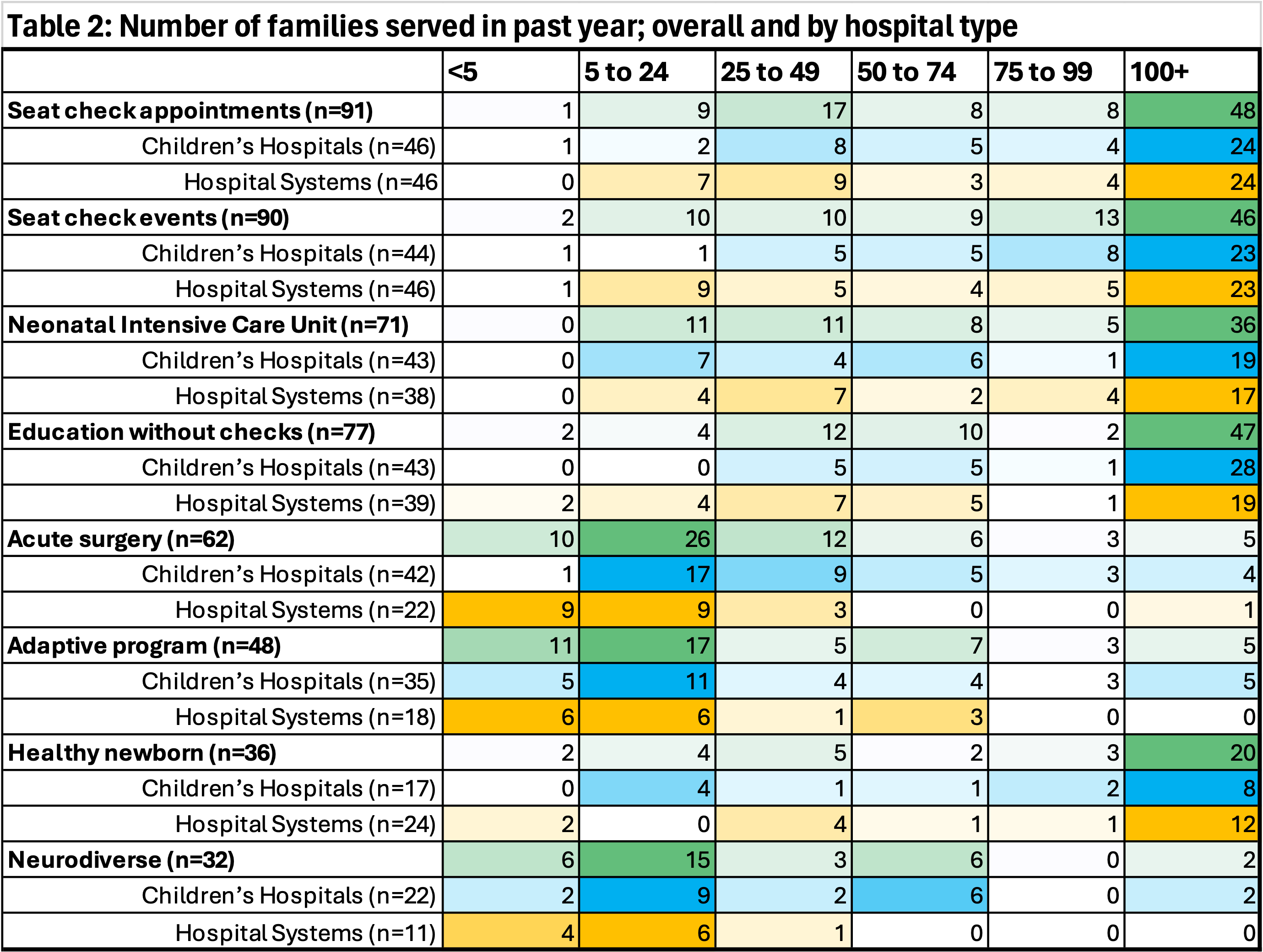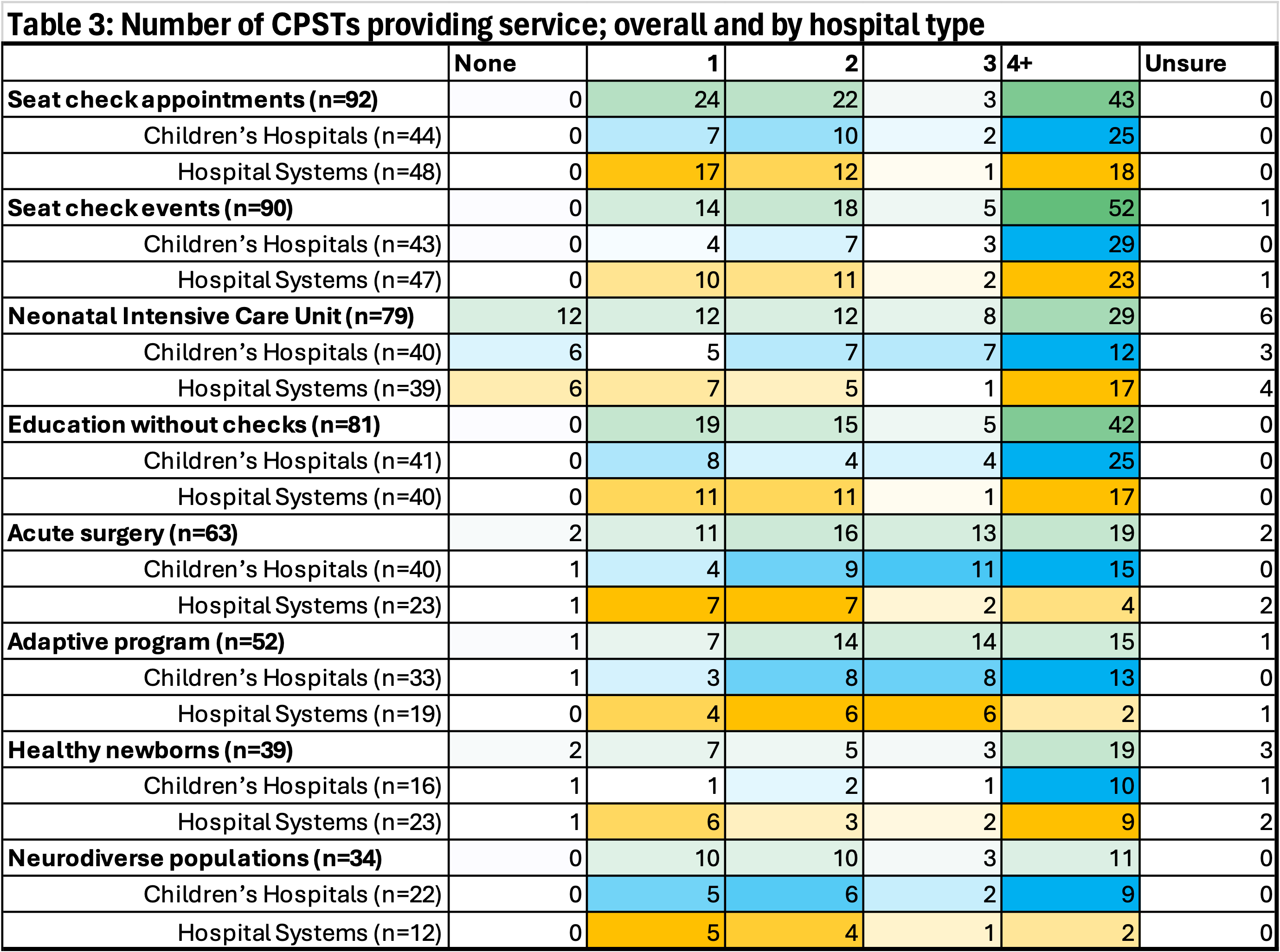Injury Prevention 1
Session: Injury Prevention 1
400 - Hospital-Based Child Passenger Safety Programming across the United States
Sunday, April 27, 2025
8:30am - 10:45am HST
Publication Number: 400.5381
Michelle Macy, Ann & Robert H. Lurie Children's Hospital of Chicago, Chicago, IL, United States; Cassandra L. Herring, Safe Kids Worldwide, SILVER SPRING, MD, United States; Sadiqa Kendi, Children's National Health System, Washington, DC, United States; Mark R. Zonfrillo, The Warren Alpert Medical School of Brown University, Providence, RI, United States; J. Morag Mackay, Safe Kids Worldwide, Washington, DC, United States

Michelle Macy, MD, MS (she/her/hers)
Professor
Ann & Robert H. Lurie Children's Hospital of Chicago
Chicago, Illinois, United States
Presenting Author(s)
Background: Child Passenger Safety Technicians (CPSTs) and others who have training in child passenger safety provide families with essential information to assure safer transportation of their children in passenger vehicles. Children’s hospitals have been under increased financial strain since the pandemic, potentially compromising the robustness of programs for child passenger safety, particularly for growing populations of children with medical complexity and neurodiversity.
Objective: To describe hospital-based child passenger safety program workforce, funding sources, child restraint system resources, and services provided.
Design/Methods: A cross-sectional survey of Safe Kids Worldwide coalitions whose lead agency is a hospital. Survey questions were developed by the study team drawing on prior literature, insights from a meeting of hospital-based CPS programs, and the experience of CPSTs at Safe Kids Worldwide. Twenty questions captured information about the number of CPSTs, hours covered per week, professional roles, paid vs. volunteer service, scope of child restraint system (CRS) installation, distribution, and loaner programs, and their sources of funding. The survey was programmed into Qualtrics and distributed via email. Descriptive and Fisher’s exact statistics, comparing children’s hospitals to hospital systems, were calculated.
Results: Surveys were delivered to 168 contacts in June 2024; 136 started (79%) and 124 completed (74%). Respondents represented Safe Kids coalitions in 39 states; 108 indicated their hospital had at least one CPST or CPST-instructor of which 52 were Children’s Hospitals and 56 were Hospital Systems. Characteristics of the CPST workforce and services provided are presented in Table1. Estimated families served by each program and CPSTs servicing each program by hospital type are presented in Tables 2 and 3. Trauma Programs were the most common source of funding (n=46, sole source 23), followed by Grants (n=36, sole source 6) and Hospital Operations (n=36, sole source 15). Loaner programs were generally free (n=43) with 5 programs requiring a deposit, 4 programs with a combination of fees, and 4 programs with a flat rate. Funding sources for distributed seats were varied and a mix of trauma program (n=25), hospital operations (n=25), philanthropy (n=35), grants (n=69), Department of Transportation (n=37), and other sources (n=30).
Conclusion(s): Most Safe Kids Worldwide hospital-led coalitions have hospital-based CPSTs and programs with varied funding sources. Children's hospitals provide more specialized services for adaptive, acute surgical and neurodiverse population needs.
Table 1: Characteristics of the Hospital-Based Child Passenger Safety Technician Workforce and Services
.png)
Table 2: Number of families served in past year; overall and by hospital type
 Cells are shaded from darkest to lightest within rows to indicate the largest number of hospitals to the smallest number of hospitals. Green = overall, Blue = Children's Hospitals, Yellow = Hospital System.
Cells are shaded from darkest to lightest within rows to indicate the largest number of hospitals to the smallest number of hospitals. Green = overall, Blue = Children's Hospitals, Yellow = Hospital System.Table 3: Number of CPSTs providing service; overall and by hospital type
 Cells are shaded from darkest to lightest within rows to indicate the largest number of hospitals to the smallest number of hospitals. Green = overall, Blue = Children's Hospitals, Yellow = Hospital System.
Cells are shaded from darkest to lightest within rows to indicate the largest number of hospitals to the smallest number of hospitals. Green = overall, Blue = Children's Hospitals, Yellow = Hospital System.
